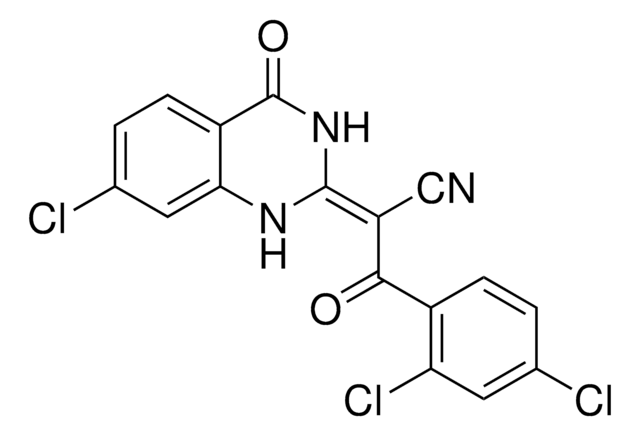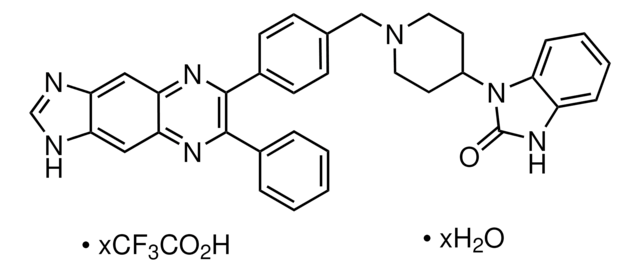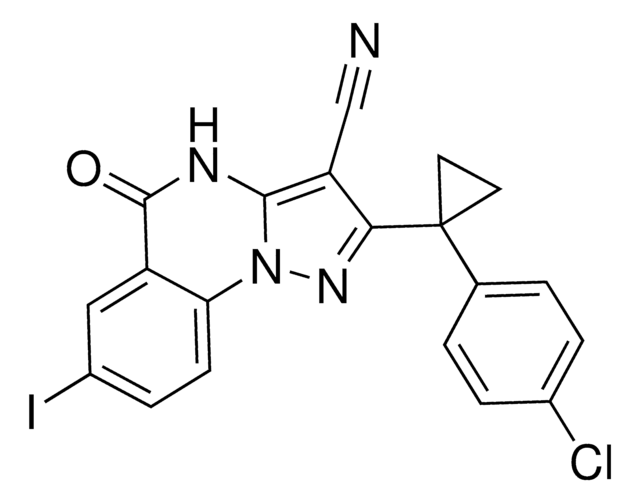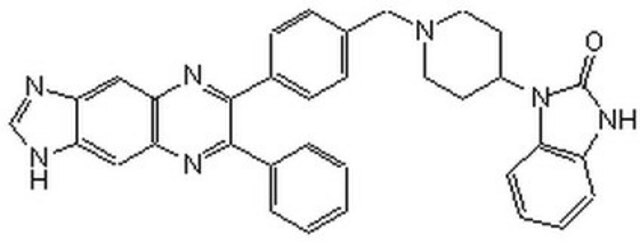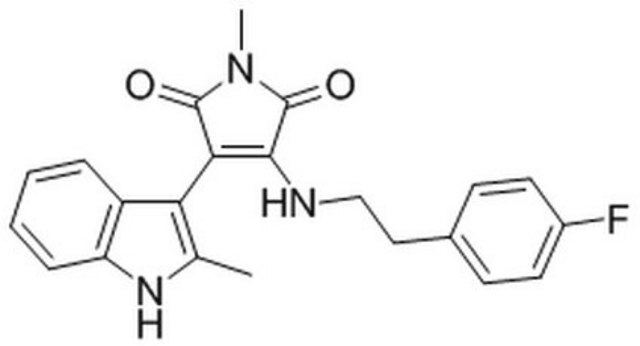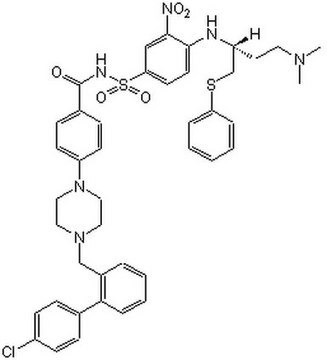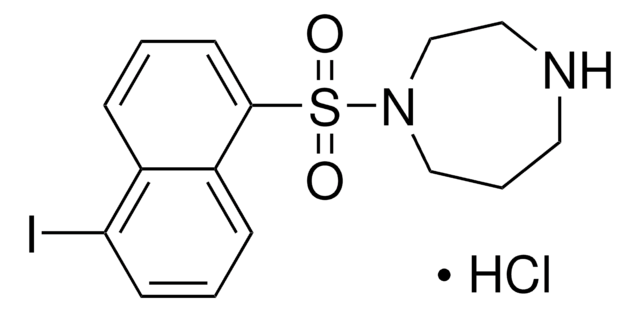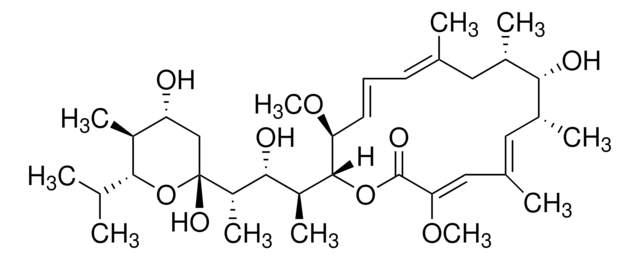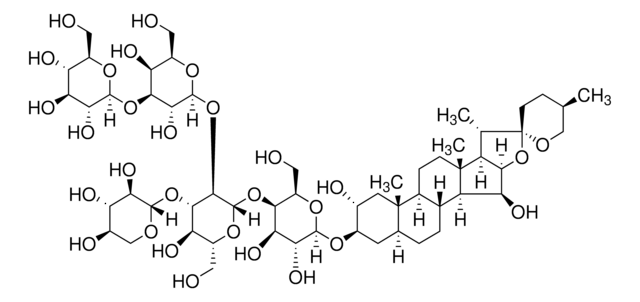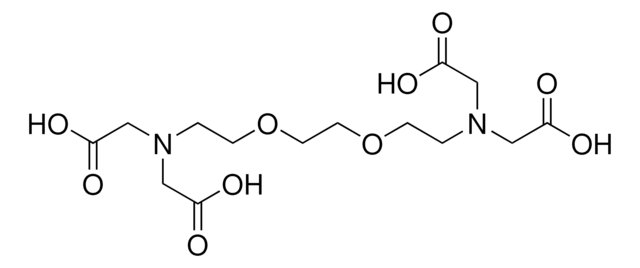H4541
HPI-4
≥98% (HPLC)
Synonym(s):
2,4-Dichloro-a-(3,4-dihydro-4-oxo-2(1H)-quinazolinylidene)-β-oxo-benzenepropanenitrile, Ciliobrevin A, Hedgehog Pathway Inhibitor 4
About This Item
Recommended Products
Quality Level
assay
≥98% (HPLC)
form
powder
color
off-white, off-white to orange
solubility
DMSO: 10 mg/mL, clear
storage temp.
2-8°C
SMILES string
Clc1ccc(c(Cl)c1)C(=O)\C(C#N)=C2\NC(=O)c3ccccc3N2
InChI
1S/C17H9Cl2N3O2/c18-9-5-6-10(13(19)7-9)15(23)12(8-20)16-21-14-4-2-1-3-11(14)17(24)22-16/h1-7,21H,(H,22,24)/b16-12+
InChI key
SESYPWCSIZUIAS-FOWTUZBSSA-N
Application
Biochem/physiol Actions
signalword
Warning
hcodes
Hazard Classifications
Acute Tox. 4 Oral - Aquatic Acute 1 - Aquatic Chronic 1
wgk_germany
WGK 3
flash_point_f
Not applicable
flash_point_c
Not applicable
Certificates of Analysis (COA)
Search for Certificates of Analysis (COA) by entering the products Lot/Batch Number. Lot and Batch Numbers can be found on a product’s label following the words ‘Lot’ or ‘Batch’.
Already Own This Product?
Find documentation for the products that you have recently purchased in the Document Library.
Customers Also Viewed
Our team of scientists has experience in all areas of research including Life Science, Material Science, Chemical Synthesis, Chromatography, Analytical and many others.
Contact Technical Service